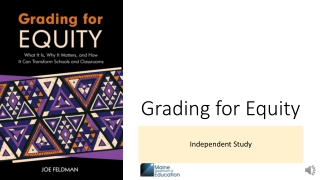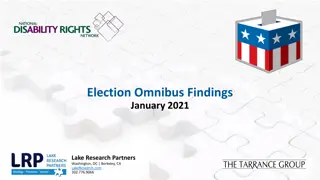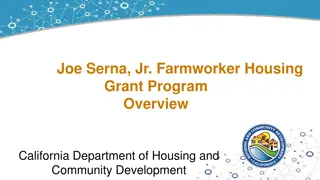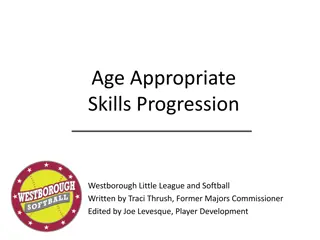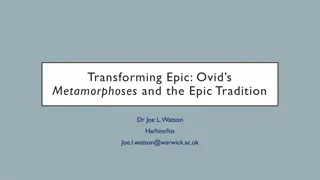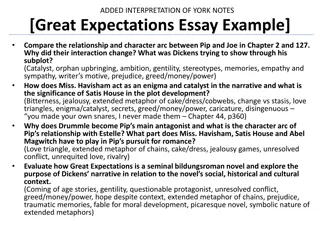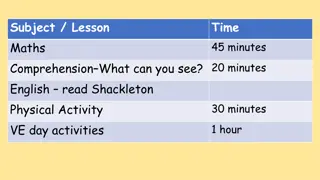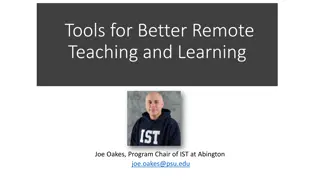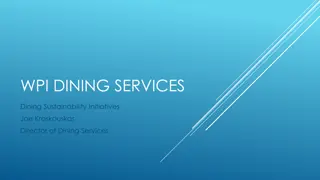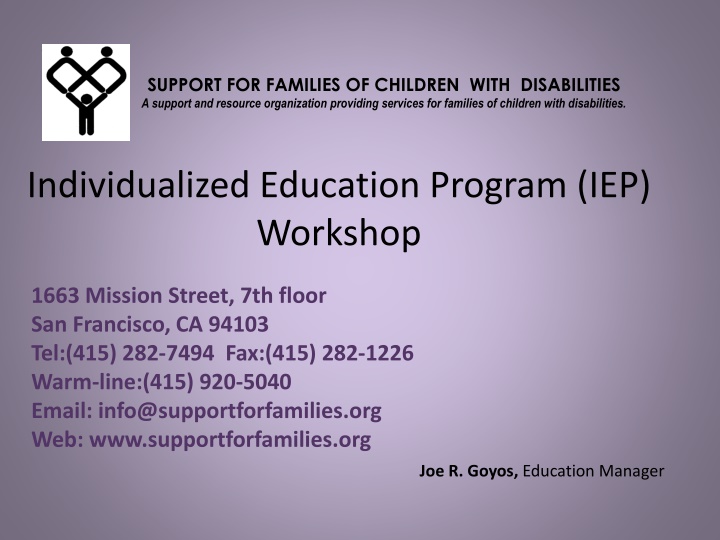
Support for Families of Children with Disabilities in San Francisco
"Explore resources and services provided by Support for Families of Children with Disabilities in San Francisco. Attend workshops on Individualized Education Programs (IEP) and learn about transitioning to adult services. Get involved in understanding the Individuals with Disabilities Education Act (IDEA)."
Download Presentation

Please find below an Image/Link to download the presentation.
The content on the website is provided AS IS for your information and personal use only. It may not be sold, licensed, or shared on other websites without obtaining consent from the author. If you encounter any issues during the download, it is possible that the publisher has removed the file from their server.
You are allowed to download the files provided on this website for personal or commercial use, subject to the condition that they are used lawfully. All files are the property of their respective owners.
The content on the website is provided AS IS for your information and personal use only. It may not be sold, licensed, or shared on other websites without obtaining consent from the author.
E N D
Presentation Transcript
SUPPORT FOR FAMILIES OF CHILDREN WITH DISABILITIES A support and resource organization providing services for families of children with disabilities. Individualized Education Program (IEP) Workshop 1663 Mission Street, 7th floor San Francisco, CA 94103 Tel:(415) 282-7494 Fax:(415) 282-1226 Warm-line:(415) 920-5040 Email: info@supportforfamilies.org Web: www.supportforfamilies.org Joe R. Goyos, Education Manager
Acknowledgements Support for Families would like to acknowledge the following resources used in this training: Special Education Rights and Responsibilities, Community Alliance for Special Education (CASE) and Protection and Advocacy, Inc. (PAI), 1992-revised April 2003. This manual is available online in .pdf format at: http://www.pai-ca.org/pubs/401601.htm The Complete IEP Guide: How to Advocate for Your Special Ed Child, Attorney Lawrence M. Siegel, 2nd edition, Nolo Press, San Francisco: Revised January 2001 California Department of Education, Special Education Division. Documents available online at http://www.cde.ca.gov/spbranch/sed/
Grantors Support for Families would like to thank the following for continued financial support: California Department of developmental services San Francisco Children and Families Commission San Francisco Department of Children, Youth and their Families San Francisco Department of Human Services US Department of education, Office of Special Education and Rehabilitation Foundations Corporations Individual donors
Individualized Education Program (IEP) Workshop Purpose To provide families and professionals with an overview of the individuals with Disabilities Education Act ( IDEA ) and how to participate in the development of an Individualized Education Program( IEP ) as well as implementing a Transition Plan through the IEP. Objectives Participants will gain an understanding of the principles of IDEA Participants will gain an understanding of the IEP and Transition process as well as obtain resources
Workshop Agenda 1. Introductions/Questions 2. Medical Home Characteristics 3. Overview of the IEP and Six Principles of IDEA 4. Relationship: How services are determined 5. Five Steps of the IEP Process & Timelines 6. Transition to Adult Services 7. 5 Steps to Transition 8. Question and Answer Session
Medical Home Characteristics: Accessible Family Centered Comprehensive Continuous Coordinated Compassionate Culturally Competent
The IDEA and Individualized Education Program (IEP) The Individuals with Disabilities Education Act (IDEA) mandates special education services for children with certain disabilities, who because of this disability needs special education and related services.
IDEA Core Concepts The IEP requirements under Part B of the IDEA emphasize the importance of three core concepts: 1. the involvement and progress of each child with a disability in the general curriculum including addressing the unique needs that arise out of the child s disability; 2. the involvement of parents and students (at age 16), together with regular and special education personnel, in making individual decisions to support each student s educational success; 3. and the preparation of students with disabilities for employment and other post-school outcomes.
Changes under IDEA 2004 Parental written consent is required before an IEP team member can be excused from attending the meeting. There are new provisions that allow alternate means of meeting participation (e.g., conference calls) if the parent and school agree. This agreement must be in writing, too.
Knowing the Legal Language of the IEP Process What does the Individual Education Program (IEP) signify: 1. Process 2. Meeting 3. Document
IDEA 2004 defines a child with a disability as a child having the following: 1. 2. 3. 4. 5. 6. 7. 8. 9. 10. *Specific learning disabilities 11. Blindness 12. Deafness 13. Multiple disabilities *Mental retardation *Hearing impairment (including deafness) *Speech or language impairments *Visual impairments (including blindness) *Serious emotional disturbance *Orthopedic impairments *Autism *Traumatic brain injury *Other health impairments And, who because of this disability needs special education and related services * CA Ed code not Federal
Special Education: refers to specifically designed instruction to meet the unique needs of a child with disability. Services may include: Audio logical services Speech therapy Orientation & mobility services Instruction in the home or hospital Adapted physical education Vision services Specialized driver training instruction Counseling and guidance Psychological services other than assessment and development of the IEP
Services cont. Parent counseling and training Health and nursing services Social worker services Specifically designed vocational education and career development Recreation services Specialized services for low incidence disabilities, such as readers, transcribers, and vision and hearing services Speech and language services Medical evaluation for diagnostic purposes
The Individuals with Disabilities Education Act (IDEA) Six Principles 1.Free and Appropriate Public Education (FAPE): 2.Assessment 3.Individualized Education Program (IEP) 4.Least Restrictive Environment (LRE) 5.Parent/Student (age 16-22) Participation 6.Procedural safeguards
1.Free and Appropriate Public Education (FAPE):
2.Assessment All areas of suspected disability Eligibility Assessor Native language More than one testing tool Cant be discriminatory
4.Least Restrictive Environment ( LRE )
LRE cont. The continuum of placements must permit students to receive an education to the maximum extent appropriate with children who do not have disabilities.
5.Parent Participation Parents and Students are considered to be an equal member of the IEP team.
IEP Team Members Student Parent/Family member Special Education Teacher General Education Teacher Principal or Site manager School district representative Etc. The student or family may invite whomever they want to participate in the IEP meeting. See handout titled, Potential Consultants to the Transition Team.
Preparing for the Transition IEP Meeting Student: Explain the Transition IEP process to your child. Help your child organize their thoughts, preferences, goals, etc. Your youth can invite anyone they want to the IEP mtg. Review current assessments with your youth. Assist in taking self-assessments (i.e. vocational assessment/skills inventory). * See Handout: About Me!
Preparing for the Transition IEP Meeting Parent/Family: Prepare Review Your Child s IEP Know What s Available/Be Informed Invite
6.Procedural safeguards Timelines Compliance Complaints Resolution Sessions Due Process 1. Mediation/Alternative Dispute Resolution 2. Fair hearing
Five Steps of the IEP Process & Timelines
Special Education: IEP process map 60 Calendar Days 15 Calendar Days 1. Written Referral Requesting Special Education Assessment Submitted 2. Assessment Plan Sent to Parent/Guardian (signature required within 15 days) 3. Assessment completed, Report is Written, initial IEP is Held * Subsequent IEP s held, at minimum, once a year Child Found eligible to Receive Special education Services IEP is developed Child Found Ineligible No services offered Parent can choose to appeal finding * Re-assessments Conducted, at minimum, once every 3 years
Five Steps of the IEP Process Referral to District for initial or additional assessments Assessment Plan IEP Meeting Placement Program Implementation Three-year evaluations are required; however, the parent may waive this requirement. Parents can request an evaluation if they feel it is necessary. A parent may call an IEP at any time, and the school district must hold the IEP within 30 days (CA Ed Code) of the parent s request.
The Relationship of Service Delivery ASSESSMENT Identifies EDUCATIONAL NEED Determines SERVICE DELIVERY
Transition To Adult Services Transition is defined as the movement of youth with disabilities into employment, post-school education, independent living and community participation.
When Should Transition to Adult Services Begin? IDEA states that transition to adult services must begin at 16 years of age or younger (if determined appropriate by the IEP team). The transition to adult process and beginning before the age of 16.
What Happens at Graduation? Students can graduate from high school with: A regular high school diploma. A certificate of completion.
When Our Children Turn 18! In California, the age of maturity is 18. What does this mean regarding the IEP and beyond. Beginning at age 17, the student s IEP could include a statement about the transfer of educational rights from the parent(s) to the student. Conservatorship and Special Needs Trusts.
What Are Transition Services? IDEA defines transition services as a coordinated set of activities that are: Designed with an outcome oriented process. Based on individual student s needs.
The Transition IEP For transition planning the IEP must include: 1. Academic Instruction 2. Related Services 3. Community Experiences 4. Development of Employment and other Post- School Objectives. * If appropriate, the transition plan may also address daily living skills and functional vocational assessments.
Five Steps to Transition 1. What are your youth s goals for the future? 2. What skills does your youth have or what are their strengths? 3. What supports and services would she/he need to pursue her/his goals? 4. Where should your youth receive these supports and services, and who could provide them? 5. How do you ensure your youth is on track to successfully meet hers/his goals. * See Handouts: - Plan Backwards from Your Vision - The 5 Step Worksheet
Resources Resources mentioned during workshop Sample Letters. Post Secondary Education (Handout: Opening Doors Article). Employment Options (Handout: Massachusetts Employment and Related Services). Residential (Handout: Self Assessments). Healthcare (Handout: Transition to Adult Health Care). Finance/Estate Planning (Handout: Financial & Estate Planning). Recreation (Handout: Recreation)
Thank you, Gracias, Any question?


